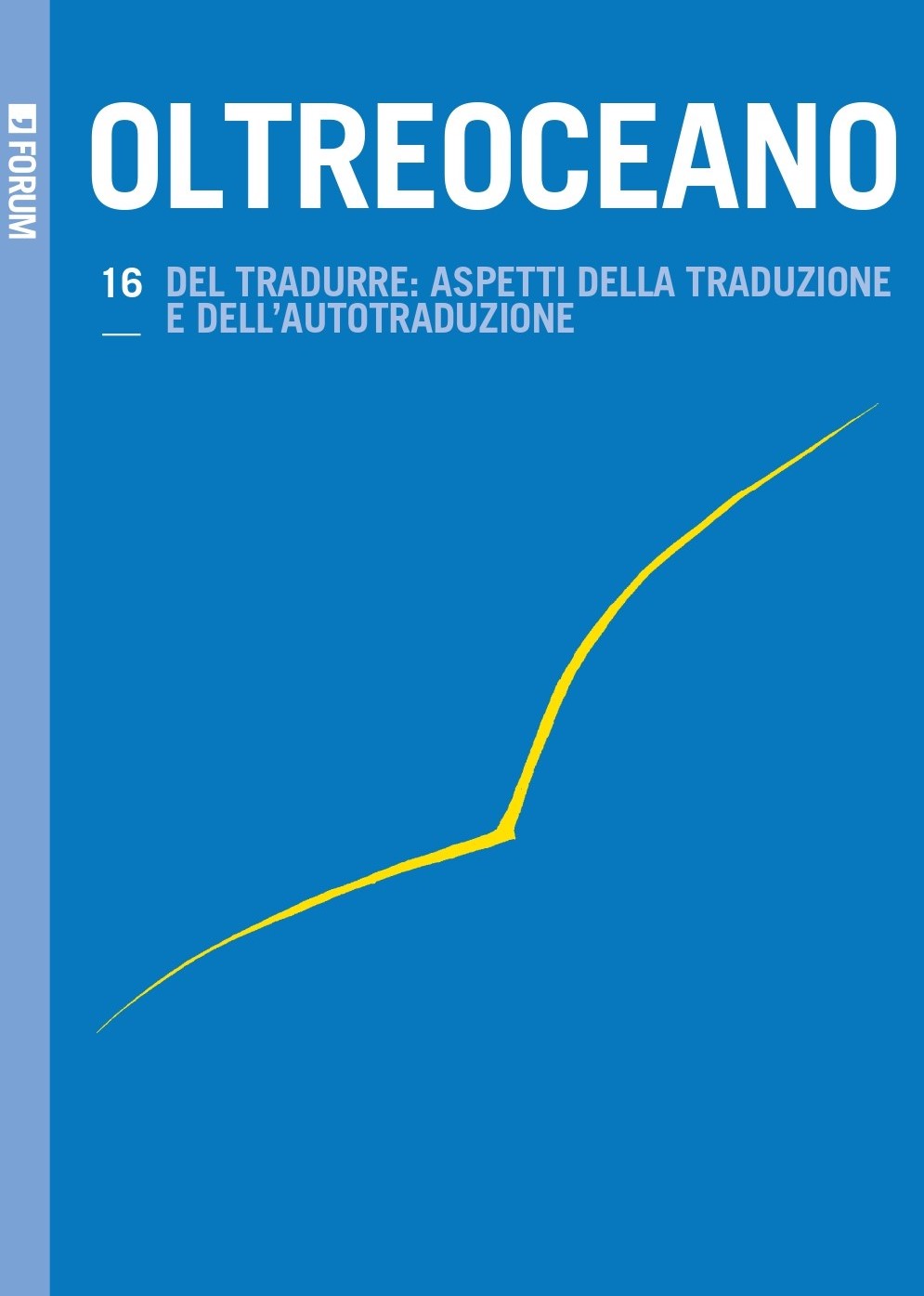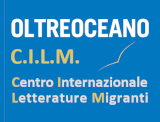“A Small Dimension of a Film”: ekphrasis cinematografica e traduzione intersemiotica in Scene from the Movie GIANT di Tino Villanueva
Parole chiave:
Tino Villanueva, Scene from the Movie GIANT, poesia, ekphrasis, cinemaAbstract
L’articolo analizzerà come, con l’ekphrasis cinematografica di A Scene from the Movie GIANT, Tino Villanueva crea una commistione intersemiotica che non fa solo esplodere le opposizioni binarie, ma mette anche in evidenza i limiti della traducibilità (e la specificità dei vari linguaggi), dando vita a una tensione che è radicata nell’esperienza della terra di confine.
“A Small Dimension of a Film”: Cinematic Ekphrasis and Intersemiotic Translation in Tino Villanueva’s Scene from the Movie GIANT
This article will analyze how, through the cinematic ekphrasis of A Scene from the Movie GIANT, Tino Villanueva creates an intersemiotic mixture that not only explodes binary oppositions, but also highlights the limits of translatability (and the specificities of the various languages), staging a tension that is rooted in the experience of the borderlands.
Downloads
Riferimenti bibliografici
Ashbery, J. (1976): Self-Portrait in a Convex Mirror. Dallas: Penguin Books.
Bruhn, S. (2000): Musical Ekphrasis: Composers Responding to Poetry and Painting. Hillsdale: Pendragon.
Clüver, C. (1997): Ekphrasis Reconsidered: On Verbal Representations of Non-Verbal Texts. In U. Lagerroth, H. Lund & E. Hedling (Eds.), Interart Poetics: Essays on the Interrelations Between the Arts and Media (pp. 19-33). Amsterdam and Atlanta: Rodopi.
Coover, R. (1987): A Night at the Movies, or, You Must Remember This: Fiction. New York: Linden Press / Simon & Schuster.
Ejzenstejn, S. (1986): Il principio cinematografico e l’ideogramma. In Id., La forma cinematografica (pp. 30-48). Torino: Einaudi.
Eliot, T. S. (2001): Four Quartets. London: Faber and Faber.
Graham, J. (1991): Region of Unlikeness. Hopewell: Ecco Press.
Hagstrum, J. (1958): The Sister Arts. The Tradition of Literary Pictorialism and English Poetry from Dryden to Gray. Chicago: University of Chicago Press.
Heffernan, J. A. W. (1993): Museum of Words: The Poetics of Ekphrasis from Homer to Ashbery. Chicago: University of Chicago Press.
Heffernan, J. A. W. (2008): The Verbal and the Visual. In D. H. Richter (Ed.), A Companion to Literary Theory (pp. 165-175). Chichester: John Wiley & Sons, Ltd.
Heffernan, J. A. W. (2016): Notes Toward a Theory of Cinematic Ekphrasis. In S. Ercolino, M. Fusillo, M. Lino & L. Zenobi (Eds.), Imaginary Films in Literature (pp. 3-17). Leiden: Brill Rodopi.
Kennedy, X. J. (1995): Nude Descending a Staircase: Poems, Songs, a Ballad. Pittsburgh: Carnegie-Mellon University Press.
Lee, A. R. & Vilanueva, T. (2010): The Breath Is Alive / with the Equal Girth of Words: Tino Villanueva in Interview. Rivista MELUS, 35, 1, pp. 167-183.
McHale, B. (2004): Postmodernist Fiction. London: Routledge.
Mitchell, W. and John T. (1995): Picture Theory: Essays on Verbal and Visual Representation. Chicago: University of Chicago Press.
Phillips, C. A Politics of Mere Being. Recuperato da https://www.poetryfoundation.org/poetrymagazine/articles/91294/a-politics-of-mere-being
Puig, M. (1976): El beso de la mujer araña. Barcellona: Seix Barral.
Pynchon, T. (2006): Gravity’s Rainbow. New York: Penguin Books.
Stock, A.M. (1998): Talking back, Looking Ahead: The Revisionist Cine-Poetry of Tino Villanueva. Bilingual Review/La Revista Bilingüe, 23, 3, pp. 237-247.
Villanueva, T. (Ed.) (1980): Chicanos, Antología histórica y literaria. Ciudad de México: Fondo de Cultura Económica.
Villanueva, T. (1987): Convocación de palabras. In T. Villanueva, Crónica de mis años peores (pp. 49-51). La Jolla: Lalo Press.
Villanueva, T. (1993): Scene from the Movie GIANT. Willimatic: Curbstone Press.
Villanueva, T. (1998): Shaking Off the Dark. Houston: Arte Público Press.
Villanueva, T. (2010): Imagen y palabra: Categorías ekphrásticas de un poemario. In M. Ezquerro & E. Ramos-Izquierdo (Eds.), Reescrituras y transgenericidades (pp. 63-74). Ciudad de México / Paris: ADEHL.
Villanueva, T. (2016): Fields of Moving Colors Layered. Poetry, 207, 6, p. 617.
Downloads
Pubblicato
Come citare
Fascicolo
Sezione
Licenza
Copyright (c) 2020 Oltreoceano - Rivista sulle migrazioni

Questo lavoro è fornito con la licenza Creative Commons Attribuzione - Non commerciale - Condividi allo stesso modo 4.0 Internazionale.
Gli autori si impegnano a rispettare le seguenti condizioni, che s’intendono accettate al momento della sottomissione per la stampa dei propri contributi.
L’invio di un testo implica che esso sia inedito e non in attesa di essere pubblicato altrove.Gli autori si impegnano a rispettare le seguenti condizioni, che s’intendono accettate al momento della sottomissione per la stampa dei propri contributi.
- Qualora venga accettato, l’autore conferisce all’editore il diritto di pubblicarlo e distribuirlo sia in forma cartacea che nell’edizione elettronica in rete. Gli articoli pubblicati saranno scaricabili e resi disponibili in open access.
- Purché segnali correttamente che la prima pubblicazione è avvenuta sulla rivista «Oltreoceano. Rivista sulle migrazioni», l’autore ha facoltà di: a) riprodurre l’articolo in estratti separati o raccolti in volume; b) pubblicare l’articolo nel proprio sito personale o in quello di corsi di insegnamento purché si tratti di siti di natura non commerciale; c) depositare l’articolo in archivi online di carattere non commerciale, legati all’istituzione di appartenenza o come parte di progetti di diffusione non commerciale e open access dei lavori scientifici.
Non è consentita l’utilizzazione dei contributi da parte di terzi, per fini commerciali o comunque non autorizzati. L’editore declina ogni responsabilità sull’uso non autorizzato del materiale pubblicato sulla rivista.













